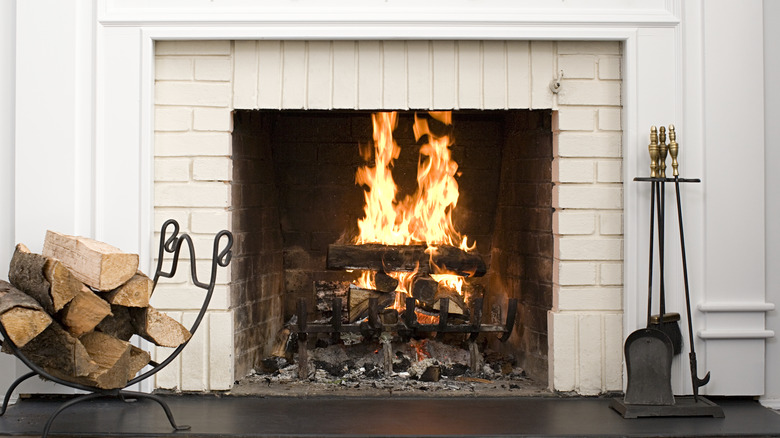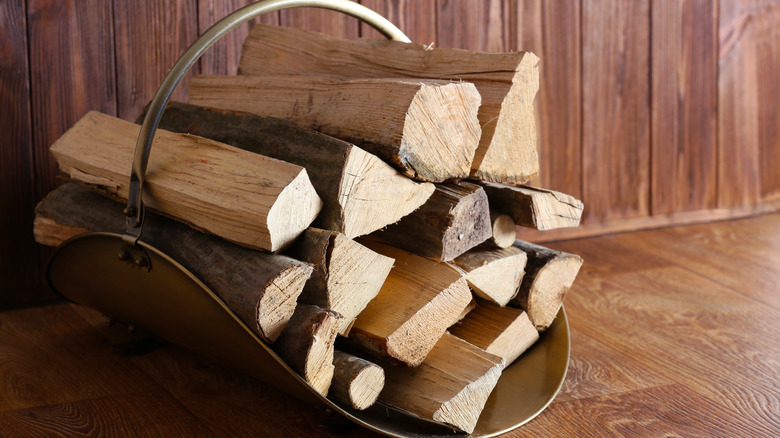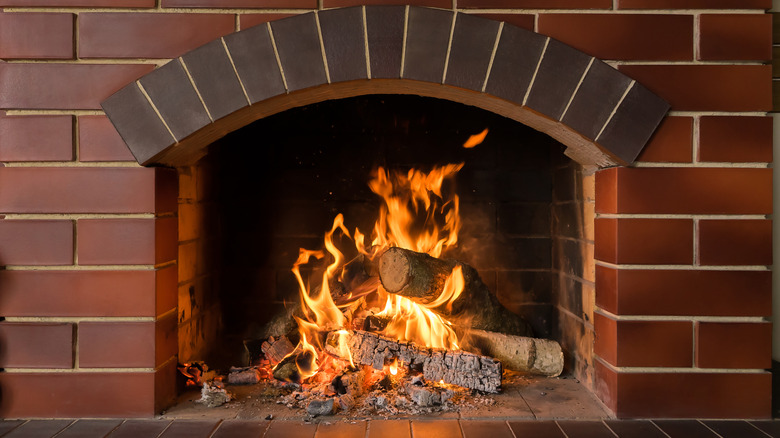How Much Wood Should You Actually Use In A Standard Fireplace?
A standard fireplace is roughly 35 inches wide, 29 inches high, and 14 inches deep. You might think that it operates on whatever you decide to toss into its fiery mouth — but that's not the case — this is where the concept of less is more comes into play. The ultimate goal is so that your fireplace can maintain a nice, steady flame. Adding too many logs risks creating a large smoking mass that can damage your chimney and contribute to air pollution.
In addition, burning too much wood also means you're spending more money. Conversely, if you're skimping on your logs, your space won't be sufficiently heated. It defeats the purpose of lighting a fire to make your room feel nice, comfy, and cozy. Moreover, it is necessary to choose your fuel carefully, because different types of firewood have variable burn times — so, just how much wood should you be using?
The magic number
You want enough wood to keep your fireplace happy without smoking out your home. The general rule of thumb is to start with a small fire, which can be lit using only one or two logs. Once it is lit, you can add more logs, but be sure to keep the flames below the grate opening. While it seems like a pretty small amount, this should give you a consistent flame that can burn for anywhere from 2 to 3 hours. If you're planning on using a fast lighting or eco log in your fireplace, you can expect them to provide heat for up to 2 hours, and you'll only need to use one log at a time.
Turning to your fireplace user's manual is your best bet if you're nervous about what constitutes too much or too little wood. Many fireplaces have recommendations on how to not only build a proper fire but also maintain it. They can have specific guidelines for fire building that also ensure you're minimizing your overall environmental impact. When in doubt, check the manual.
A few other factors to keep in mind
Your frequency of use and the actual type of wood you're burning both play a part in the amount of firewood you'll need to use for a standard fireplace. For example, if you live in an area that remains cold for more than just a few months out of the year or where snow is the norm, chances are that you'll need a nice stockpile of fuel to keep your fireplace fed.
Different types of wood also burn at different rates. There are two types of wood that you can use as fuel: Hardwood and softwood. Mostly, it's recommended that you steer clear of softwood because it causes more smoke, has little heat or flame output, and can even gunk up your flue. Hardwoods generally burn longer and produce more heat because they have a higher density, which also means that you'll be feeding your fire less frequently.
Birch, cherry, maple, yew, and walnut are all suitable options for burning. Be sure that your wood has been seasoned, which means that the logs have been dried out with very low moisture content. It's also recommended that you use kiln-dried wood because it has an overall uniform burn and hasn't been sitting out long enough to grow mold or become a habitat for tiny bugs.


